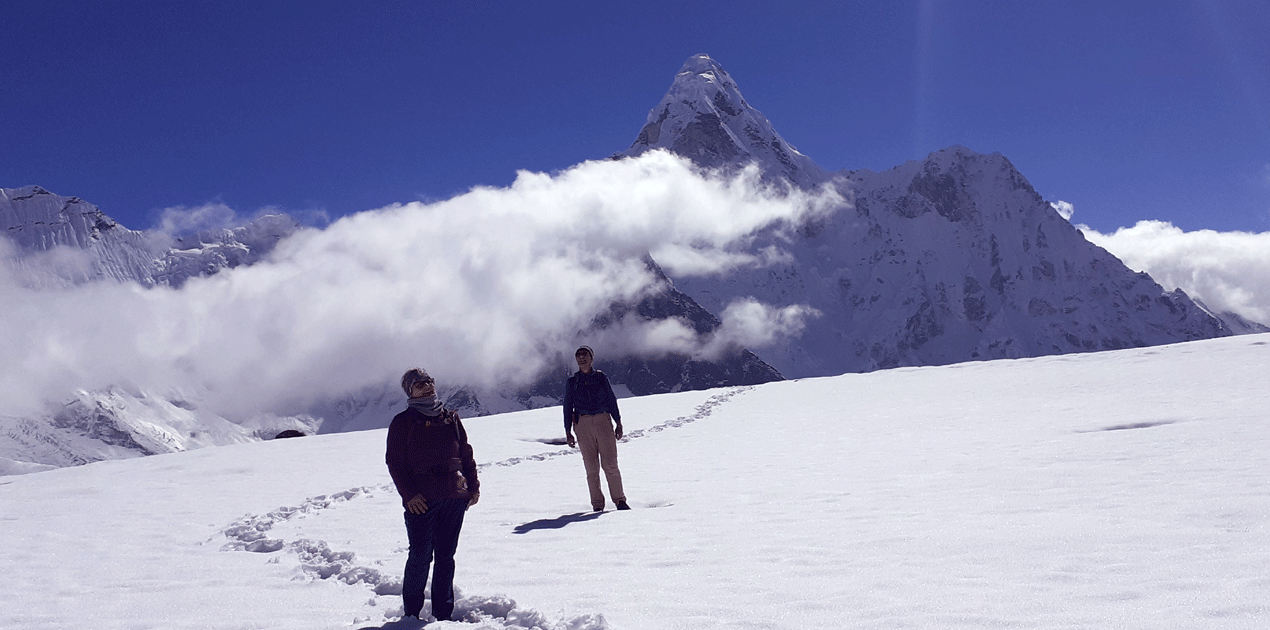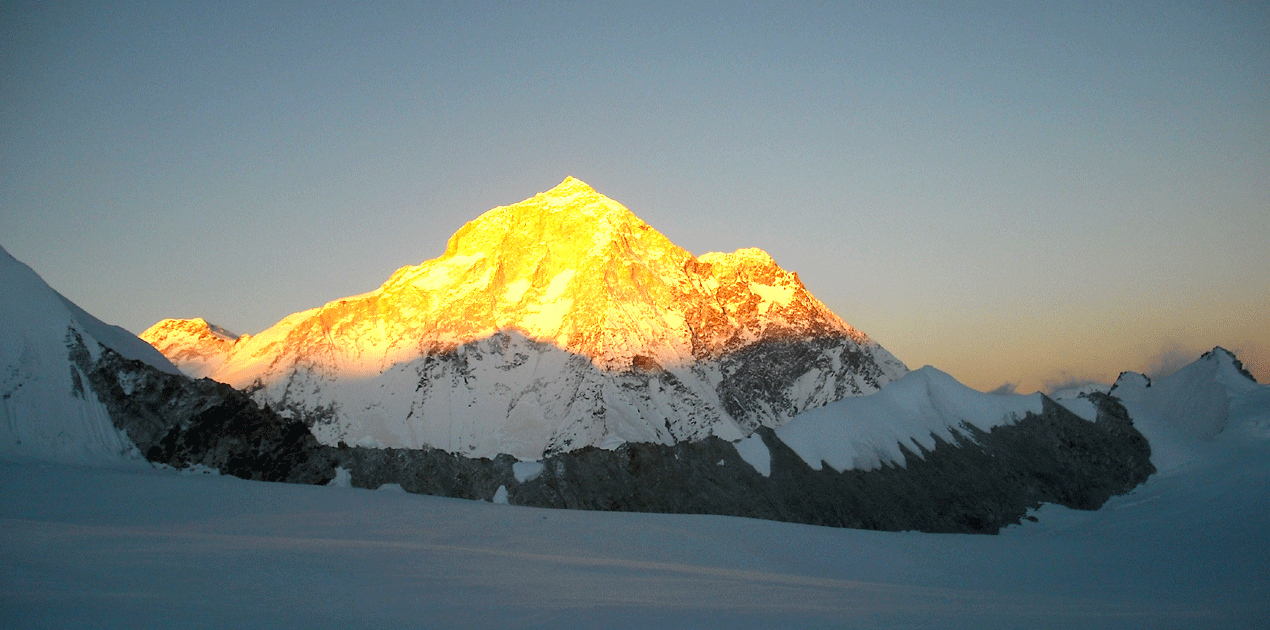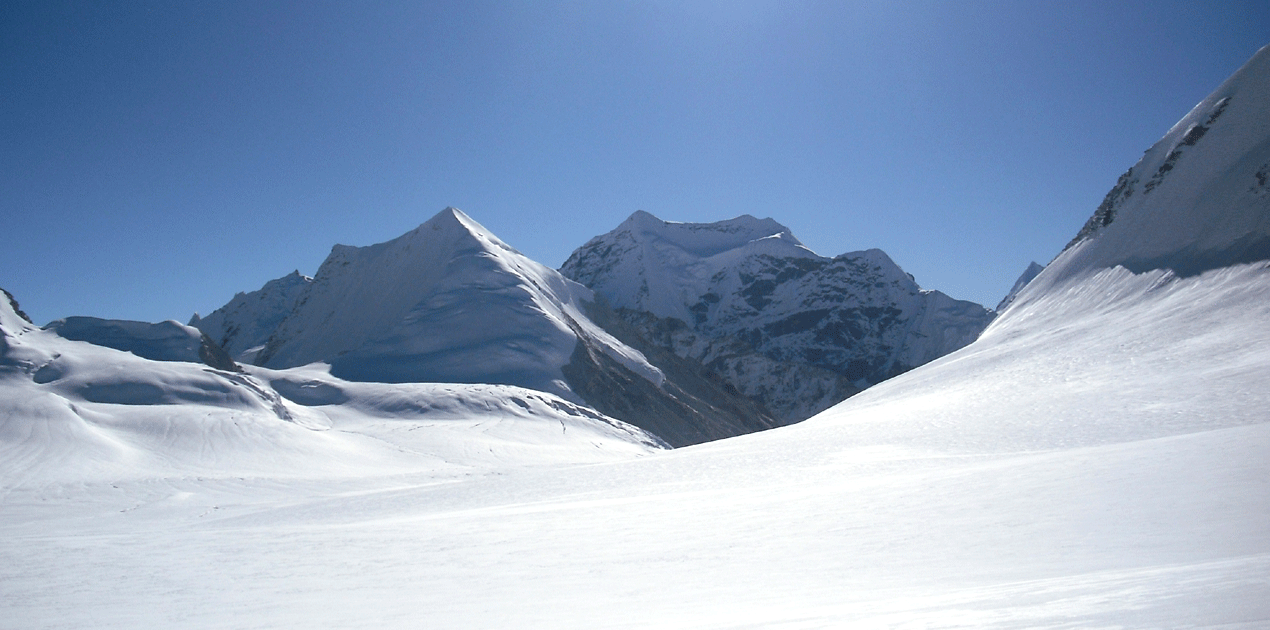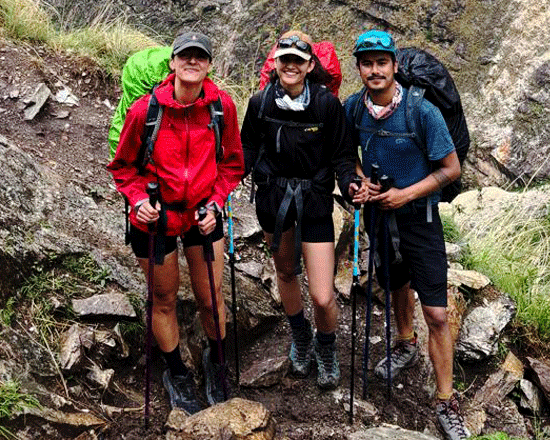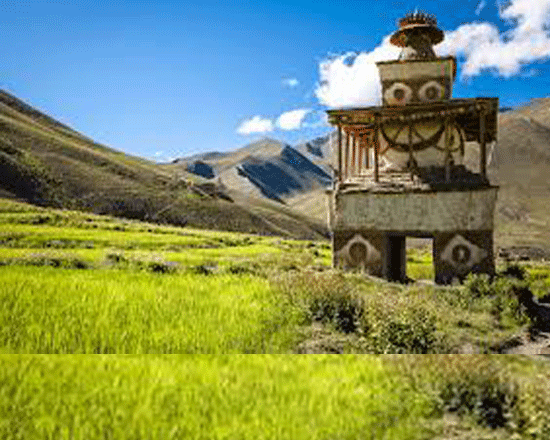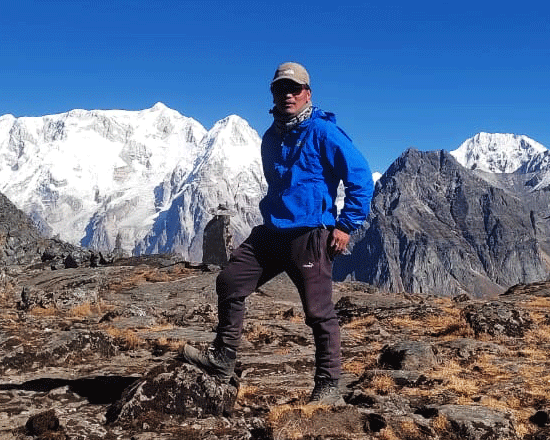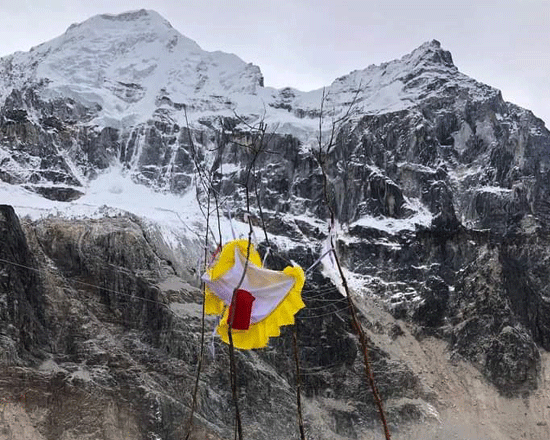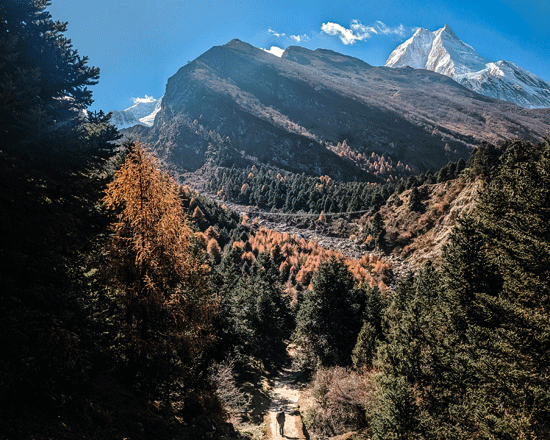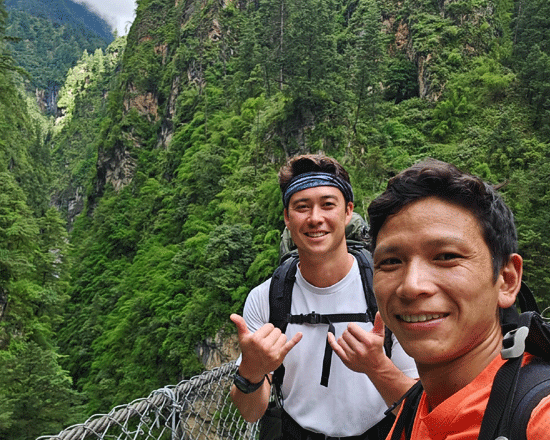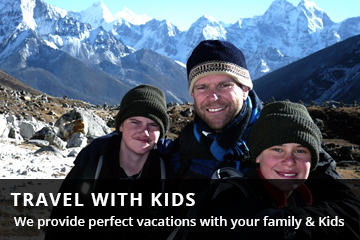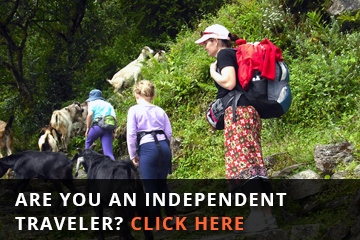Great Himalaya Trail
Great Himalaya Trail
Wilderness TrekkingTrip Facts
This is challenging and technical Trekking, climbing of Nepal, you most have to physically fit and mentally prepare, off the beaten trails, camping or challenging high passes Treks, at this level can he arranged for periods of 18 to 32 days. Typically, a gradual ascent through a green river valley will lead you up to a number of high passes, where you will reach the altitude of 5416m. Often times, you will get a close insight into the Tibetan culture. Participants should expect to trek above 5416m/17872ft. or climbing 6540m.
100%
Overview
The Great Himalaya Trail Trek:
Unraveling the Routes along the Great Himalaya Trail
The Great Himalayan Trail offers two distinct routes: the low Route and the upper Route. However, the upper route is considered the true Great Himalayan Trail. Drawing on our extensive 25-year experience in Nepal Trekking, we strongly recommend beginning your GHT journey from the eastern side. Nepal Wilderness Trekking has expertly crafted itineraries that allow you to complete the GHT route continuously or choose specific sections to conquer, accommodating your availability and preferences.
A Glimpse into the History of the Great Himalaya Trail
The legacy of the Great Himalaya Trail dates back to 1949 when Bill Tilman became the first chain traveler to explore the Helambu, Langtang, Kali Gandaki Valley, and Mount Everest regions. The introduction of organized trekking holidays in 1965 revolutionized travel, making the Himalayan regions accessible to adventurers from all walks of life. It’s worth noting that Nepal, though one of the most accessible countries, had strict ‘no-go’ areas along its border with Tibet until 2002. Since then, Nepal has opened all its mountains for permit-based trekking, attracting intrepid explorers eager to conquer the Great Himalayan Trail.
Nepal Wilderness Trekking stands as one of the pioneering trekking agencies championing the promotion of this iconic hiking route. Our seasoned trekking guides and travel planners possess unparalleled expertise in high-caliber trekking in Nepal. Following the guidance of our travel experts is highly recommended, given our comprehensive knowledge of the entire GHT course within Nepal.
The Great Himalayan Trail: A Brief Overview
The Great Himalayan Trail is a monumental undertaking, requiring approximately 150 days to complete. This epic journey meanders through the Nepal Himalayas, showcasing some of the world’s highest peaks. Your trek commences in the Kanchenjunga region, nestled in the shadows of Mt. Kanchenjunga, the third-highest mountain on the planet. This region, especially in spring, is renowned for its stunning Rhododendrons, adorning the hills with a kaleidoscope of colors.
Lumba Sumba Pass & Makalu Region
The trek to Kanchenjunga Base Camp includes crossing the Lumba Sumba Pass (5,178m) and venturing into the Makalu region. Basic tea houses provide respite in the Kanchenjunga region, inhabited predominantly by the ethnic Limbu and Rai communities. Camping is essential as you journey from Ghunsa westward to Lumba Sumba Pass.
Dividing the Great Himalayan Trail
For trekkers who wish to divide their Great Himalayan Trail adventure into sections, returning via Tumlingtar is recommended. Alternatively, continue northward toward the Nepal-Tibet border area, reveling in the beauty of the Makalu region (part of the Makalu Barun National Park) and captivating views of Mt. Makalu and Makalu Base Camp. The high route leads to Amphu Lapha, crossing the awe-inspiring Sherpani Col, offering breathtaking vistas of snow-clad peaks and towering mountains. Now, you’re in the heart of the Everest region, exploring the enchanting Khumbu valley. Accommodation is readily available in several tea houses along the route. After a trek that includes Gokyo lakes and a visit to Gokyo Ri, plus a crossing of Renjo-la pass, you transition into the Rolwaling valley via Tashi Lapcha pass, where Gurungs and Sherpas call this region home.
Rolwaling to Langtang: Tamang and Sherpa Cultures
Upon descending from the Rolwaling Valley through Tilman Pass, you’ll enter the Langtang Valley, home to the Tamang and Sherpa ethnic groups. This part of your journey exposes you to diverse customs, lifestyles, traditional attire, and unique languages specific to these ethnicities.
Continuing your odyssey, you’ll venture into the Ganesh Himal region and the Ruby Valley, where lush meadows and fertile pasturelands unfold against the backdrop of the mighty Annapurna range. In the Ruby Valley area, Gurung and Magar communities predominate.
Manaslu Region: Larke-la Pass and Annapurna Views
In the Manaslu area, your trek follows much of the Manaslu circuit’s route. The Larke-la pass (5,106m), north of Mt. Manaslu (8,163m), treats you to captivating views of the Annapurna mountain range, Mt. Manaslu, and the towering peaks of the east.
After conquering the Thorong-la pass at 5,416 meters, the Manaslu circuit trail merges with the Annapurna circuit trail, leading you to Manang and across the Thorong-la pass. As you descend, you’ll be rewarded with spectacular views of Upper Mustang, a region characterized by its barren yet incredibly colorful landscape. Along the way, a stop at Muktinath, a renowned pilgrimage destination, precedes your westward journey toward the Upper Dolpo trekking area. Upper Dolpo stands as one of Nepal’s remotest regions, boasting pristine natural beauty and a rich cultural heritage. During your trek, you might walk for days without encountering settlements, but you’ll likely cross paths with caravans of yaks and goats, either grazing or transporting goods.
Rara Lake to Simikot: Exploring Remote Villages
Continuing your journey off the beaten path, you’ll reach the serene oasis of Rara Lake, nestled at nearly 3,000 meters, framed by dense forests and distant snow-capped mountains. The route to Simikot takes you through remote areas That have seen few tourists. As you pass through local villages, you’ll gain insights into the lifestyles and traditions of the people residing in one of Nepal’s remotest and economically disadvantaged regions.
The route further leads to the remote Limi Valley trek, featuring abundant flora and fauna, ancient Buddhist monasteries, and rich religious traditions. From Simikot, the starting point of the Mt. Kailash trek, you can embark on the Great Himalayan Trail’s final leg, culminating at the Hilsa border crossing, the Nepal-Tibet border. The journey back to Kathmandu retraces your steps via Simikot.
Great Himalaya trail distance
The Great Himalaya Trail (GHT) is not a single, fixed route; instead, it comprises a network of existing trails and routes that span the entire length of the Himalayas, covering roughly 1,600 miles (2,600 kilometers). This network offers trekkers a variety of experiences, from remote wilderness areas to culturally rich villages, showcasing the diverse landscapes and cultures of the region, The trail passes through six countries: Bhutan, Nepal, India, Pakistan, Tibet (China), and Afghanistan.
However, it’s important to note that the exact distance can vary depending on the specific route taken. Moreover, any deviations or side trips a trekker might choose to make along the way can also impact the overall length of the trek. Furthermore, the trail’s length is subject to change due to the establishment of new routes or modifications to existing ones.
Conclusion
A summary can hardly capture the grandeur of the Great Himalayan Trail high route. The trail unfolds an astonishing tapestry of landscapes, natural wonders, diverse lifestyles, cultures, and traditions unique to various ethnic groups. To delve deeper into these regions, explore the distinct sections of the Great Himalaya Trail. Our dedicated team at Nepal Wilderness Trekking is eager to guide you through the route options.
Detail Itinerary
- Day 1: Transfer from the airport to the hotel
- Day 2: Visit UNESCO World Heritage sites in Kathmandu Valley
- Day 3: Fly to Bhadrapur and drive to Taplejung
- Day 4:Drive to Lelep and trek to Sekathum
- Day 5: The trek to Amjilosa
- Day 6: Journey to Gyabla
- Day 7: Trekking to Ghunsa
- Day 8: Day of acclimatization
- Day 9: Trekking to Khambachen
- Day 10: The trek to Lonak
- Day 11: The trek to Pangpema
- Day 12: The trek down to Khambachen
- Day 13: Trek to the village of Pale
- Day 14: Trek to the base camp of Nango-la
- Day 15: Trek to Yagma Khola via Nango La
- Day 16: Hike to Olangchung Gola
- Day 17: Rest day and visit an old historical site.
- Day 18: Upper Lanmale trek
- Day 19: Trekking to Pass Camp
- Day 20: Trek to Yak Kharka via Lumbasunba pass (5178 meters)
- Day 21: Trekking to Thudam
- Day 22: Trekking to Kharka
- Day 23: Trekking to Chyamtang
- Day 24: Trekking to Honkon
- Day 25:Trekking to Bakim Kharka
- Day 26:Trekking to Molun Pokhari
- Day 27:Trekking to Kharka
- Day 28:Trekking to cave camp
- Day 29:Trekking to Kalo Pokhari
- Day 30:Trekking to Yak Kharka
- Day 31:Trekking to Yangla Kharka
- Day 32:Trekking to Langmale Kharka
- Day 33:Trekking to Makalu base camp
- Day 34: Day of acclimatization
- Day 35:Trekking to Swiss base camp
- Day 36: An extra day of learning basic climbing safety
- Day 37:Trekking to Sherpini Col base camp
- Day 38: Trek to Barunche base camp via the Sherpini west pass (6143m)
- Day 39:Trekking to Hungku
- Day 40:Trekking to Amphu Labsta base camp
- Day 41: Trek from Amphu labtsa (5800 m) to Chhukung
- Day 42: The day of rest
- Day 43: Trek to Labuche via Khumbala Pass (5335 meters)
- Day 44:Trekking to Gorakhchhep
- Day 45: Hike to Kalaphatter (5556m) and trek to Dgongla
- Day 46: Cho-la pass (5420m) trek to Gokyo
- Day 47: After a rest day, hike to Gokyo ri (5400m).
- Day 48: Hike to Lumden via Renjo-la (5345m)
- Day 49: The trek to Thame
- Day 50:Trek to Parchemuche Tsho
- Day 51: Trek to the base camp of Tashi Lapcha
- Day 52: Trek to Glacier Camp via Tashi Lapcha (5760m)
- Day 53:Trek to Na
- Day 54:Trek to Bedding
- Day 55:Trek to Simigoun
- Day 56:Trek to Orang Danda
- Day 57:Trek to Loting
- Day 58:Trek to Bigu Gompa
- Day 59:Rest day Female Buddhism School
- Day 60: Trek to Sano Jyandan via Tinsang Pass (3780 meters)
- Day 61:Trek to Last Resort
- Day 62:Trek to Listi
- Day 63:Trek to Shotang Kharka
- Day 64:Trek to Chogomogor Kharka
- Day 65:Trek to Kyansin
- Day 66:Trek to Tembathan
- Day 69:Trek to Chedupa Kharka
- Day 70:Rest day
- Day 71:Trek to Nemagchupka Kharka
- Day 72:Trek to Panch Pokhari
- Day 73:Trek to Intermediary Camp
- Day 74:Trek to Tin Pokhari
- Day 75:Trek to Tilman South base camp
- Day 76: Overnight trek to Tilman North base camp via Tilman pass (5320m)
- Day 77:Trek to Kyangin Gumba
- Day 78:Trek to Lama Hotel
- Day 79:Trek to Syabrubesi
- Day 80:Rest day shopping day
- Day 81:Trek to Gatlang
- Day 82:Trek to Somdang vua Khurpu Danda (3710m)
- Day 83:Trek to Tipling via pansan pass (3830m)
- Day 84:Trek to Lapa Khola
- Day 85:Trek to Nauban Kharka via mangro Bhanjyang (2940m)
- Day 86:Trek to Keranja
- Day 87:Trek to Jagat
- Day 88:Trek to Deng
- Day 89:Trek to Namrung
- Day 90:Trek to Sama
- Day 91:Hike to Pungen Gompa and back to Sama
- Day 92:Trek to Samdo
- Day 93:Trek to Dharamsala
- Day 94:Trek to Bhimtang via Larke Pass (5161m)
- Day 95:Trek to Dharapani
- Day 96:Trek to Chame
- Day 97:Trek to Upper Pisang
- Day 98:Trek to Manang
- Day 99:Trek to Leader
- Day 100:Trek to High Camp
- Day 101:Trek to Muktinath via Thorongla pass (5416m)
- Day 102:REST DAY
- Day 103:Trek to Phale
- Day 104:Trek to Bhima Danda
- Day 105:Trek to Santa phedi
- Day 106:Trek to Niwas-la Phedi via Jungben-la Pass (5120m)
- Day 107:Trek to Nulungsumde Kharka via Niwas pass (5550m)
- Day 108:Trek to Tulsi Khola camp
- Day 109:Trek to Chharka Bhot
- Day 110:Rest Day
- Day 111:Trek to Lake camp via Mo-la Pass (5110m)
- Day 112:Trek to Tinje village
- Day 113:Trek to Simen village
- Day 114:Trek to Khomagaun
- Day 115:Trek to Saldang via Khoma Pass (4460m)
- Day 116:Rest day
- Day 117:Trek to Vijer
- Day 118:Trek to Pho village
- Day 119:Rest day
- Day 120:Trek to Pung Khola via Nyingma Gyanzen pass (5563m)
- Day 121:Trek to Chandi Khola via Yala pass (5414m)
- Day 122:Trek to Takla Khola
- Day 123:Trek to Thajuchaur via Chyargo pass (5150m)
- Day 124:Trek to Shilenchura Kharka
- Day 125:Trek to Tiyar village
- Day 126:Trek to Mangri
- Day 127:Trek to Gamgadhi
- Day 128:Trek to Rara Lake
- Day 129:Rest day
- Day 130:Trek to Gamdadgi
- Day 131:Trek to Bam
- Day 132:Trek Trek to Jogimara via Chankheli pass
- Day 133:Trek to Darma
- Day 134:Trek to Apsia Lake
- Day 135:Trek to Punkha khola
- Day 136:Trek to River camp
- Day 137:Trek to Simikot
- Day 138:Rest day
- Day 139:Trek to Kermi
- Day 140:Trek to Chhungsa Khola
- Day 141:Trek to Nyalu-la base camp
- Day 142:Trek to Takchi camp via Nyalu-la pass (5005m)
- Day 143:Trek to Jang
- Day 144:Trek to Halji
- Day 145:Trek to Tila Khola
- Day 146:Trek to Manepeme
- Day 147:Trek to Hilsa
- Day 148:Rest day
- Day 149:Drive to Kermi
- Day 150:Trek to Simikot
- Day 151:Fly to Kathmandu via Nepalgunj
- Day 152:Extra day can be anywhere
- Day 153:Relaxing day
- Day 154:Flight to your destination
Cost Included
- Pick-up and drop-off at the airport are included in the tour package
- In the city, there is a 3-star hotel with a BB plan
- As per the itinerary, the flight
- As per the itinerary, all transportation will be provided
- Nepali crew insurance and equipment
- Holder of a government license as a trekking guide and porter (2 trekkers = 1 porter for camping)
- Guided city tour with entrance fees and private transportation
- The Medical Kit (first box to be added)
- Taxes collected by the government and local governments
- Group climbing equipment, not personal equipment
- During the trek, farewell teahouses or homestays will be available
- All meals are provided during the trek: breakfast, lunch, and dinner
- Government paperwork with fees for national parks
- Duffel bag for the company
- Set of satellite phones
Cost Excluded
- Fees for Nepali visas
- Flights on international routes
- Personal expenses (such as battery charge, chocolate candy, P.T., and Wi-Fi).
- Insurance coverage for rescue operations
- Meals in the city (lunch and dinner) and extra nights due to early arrivals, overstays, or any other reasons.
- All beverage types of alcohol, tea, and any bottle of drink
- Charges for money wires
- Guide tips, porter tips, and driver tips (all crew during the trek with the driver)

